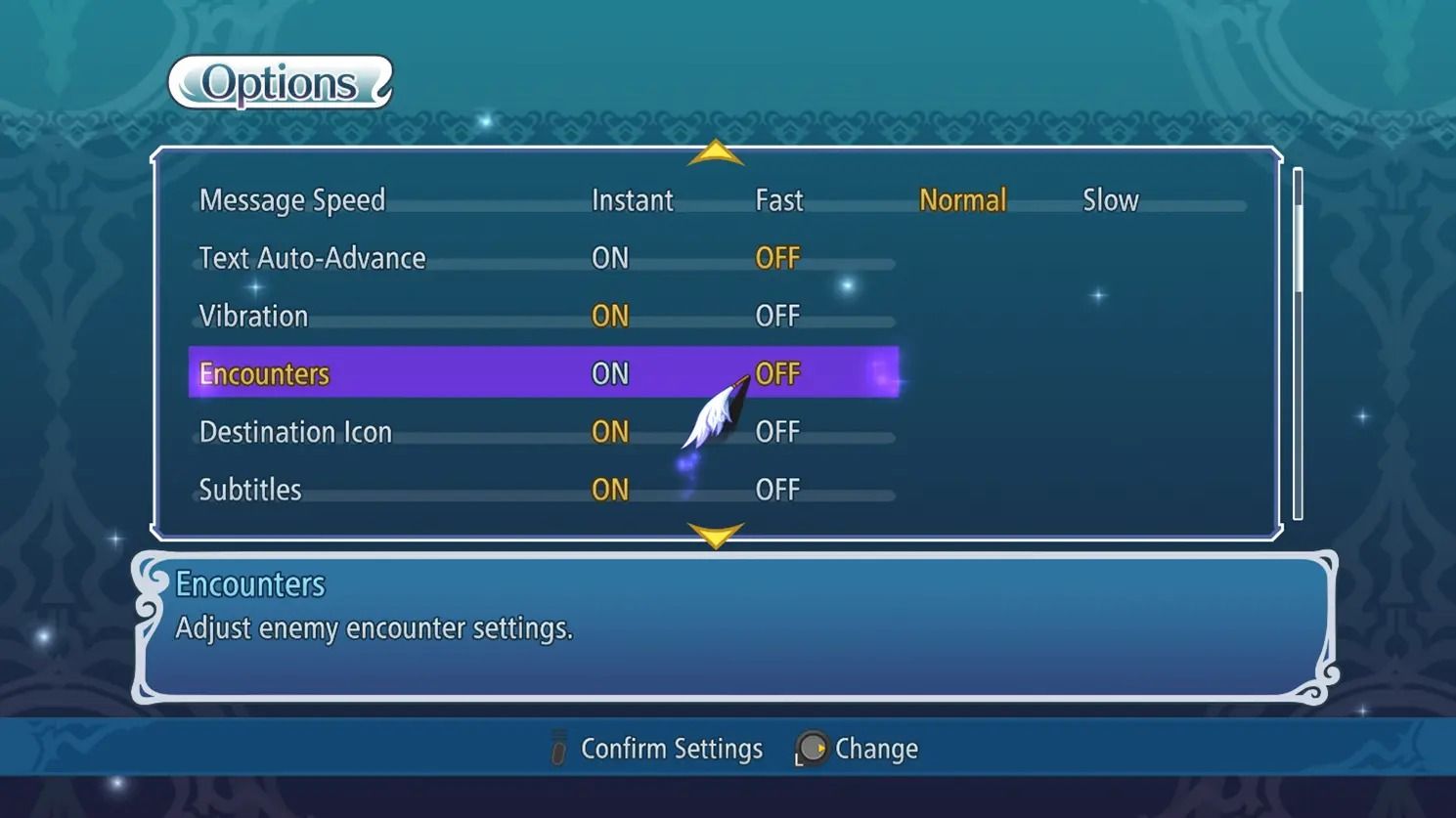The story of Tales of Graces is an interesting one. The 12th mainline entry in Bandai Namco’s long-running and prolific Tales of series, Tales of Graces was the follow-up to both the much-lauded Tales of Vesperia and the more middling Tales of Hearts. Though that initial release was a Japan-only launch for the Nintendo Wii, Bandai Namco eventually localized the game and ported it to the PlayStation 3 as Tales of Graces f. At the time of its release, Tales of Graces f was a bit of a polarizing entry thanks to the many new gameplay mechanics it introduced. However, it has since experienced a bit of a glow-up in the eyes of series fans who recognize it for its surprisingly strong and heartfelt narrative, along with what’s arguably some of the best combat in the series.
Bandai Namco has been open about its initiative to remake and remaster several games in the Tales series to help free the older titles from their hardware exclusivity, and Tales of Graces f Remastered marks the first real entry in the “Tales of Series Remaster Project“. Perhaps more importantly, it’s also one of the few PlayStation 3-exclusive titles to get a release on modern hardware, proving that it is indeed possible to port games from the console despite its notoriously complex and finicky Cell architecture. But one of the biggest questions fans likely have about Tales of Graces f Remastered is how it stacks up against Bandai Namco’s other recent Tales remaster, 2023’s Tales of Symphonia Remastered. Given the disappointment fans had over Symphonia‘s treatment in its remaster, it’s understandable to have some trepidation regarding how Bandai Namco is approaching its goal of remaking or remastering other games in the series.
Not only is Tales of Graces f Remastered the definitive version of what is arguably one of the best games in the series, but it’s also a firm foundation for the future of other Tales remakes and remasters. As a Tales game, it delivers on all fronts, with charming characters that are easy to get attached to and be moved by, a predictable yet emotionally poignant narrative that tackles some challenging and atypical themes for the series, and an almost absurd amount of depth and customization afforded by its myriad of combat mechanics and progression systems. As a remaster, Tales of Graces f Remastered dutifully honors the original game by keeping the core elements intact, but presents them in gorgeous HD at a rock-solid 60 FPS. Better yet, Tales of Graces f Remastered introduces a slew of quality-of-life improvements and accessibility options that allow players to cater the experience to their liking down to the smallest minutiae. While its pacing issues persist, and portions of the latter half of the game are plagued by needless backtracking and some overly-long dungeons, Tales of Graces f Remastered is both a highlight of the series and one of the best entries to introduce new fans to the Tales franchise.

Related
Tales of Series Remaster Wish List
As Bandai Namco moves forward with the “Tales of Series Remaster Project,” there are several games in the series that should are more than worthy.
Tales of Graces f Remastered’s Story and Characters Have a Magnetic Pull
One thing that remains constant across all releases of Tales of Graces is the game’s plot and cast of characters, and the passage of time has done little to diminish the impact of both. Things start simply enough, with two brothers heading out on an innocent childhood adventure into a meadow near their home. But a startling discovery of an amnesiac girl with striking features and an odd demeanor sets the brothers and their fellow childhood friend on the course for an adventure that will eventually see them saving the world of Ephinea. It’s all very predictable, and it hits all the right notes for what one would expect in a JRPG plot, but the path to get there is littered with some surprisingly challenging themes and ideas, such as what it means to be human, the need for connection and empathy to prevent people from giving in to their darker nature, and the unbreakable bonds of friendship.
Asbel Lhant is both a typical and an atypical JRPG protagonist, at once a familiar representation of the classic hero archetype while also standing counter to the brooding anti-heroes that had come to lead most AAA role-playing games at the time of Tales of Graces‘ original release. Asbel’s charming optimism, as well as his altruistic stubbornness to never give up on his friends, regardless of what it might cost him, makes him one of the most endearing leads in the entire Tales series, and perhaps in the genre as a whole. The same praise can be heaped on the rest of the main cast, especially Sophie, whose tragic backstory and child-like naïveté resonate strongly with Asbel’s desire to protect her and help her learn to live on her own terms.
Anyone who has played the original Tales of Graces f can attest to how drawn-out and padded the back half of the game can feel compared to the first 20 hours or so, and the same sentiment applies to Tales of Graces f Remastered. But it’s ultimately the cast of characters and the story that kept me glued to the screen in moments when the gameplay started to wear thin. This is only further helped by the Tales series’ trademark skits, which help to develop each member of the party further and establish the dynamic among the group. By the time I rolled credits, I found myself deeply moved by Tales of Graces f Remastered‘s simple yet effective storytelling, and I honestly wasn’t quite ready to say goodbye to these characters despite having spent upwards of 40 hours with them.
Combat in Tales of Graces f Remastered Makes a Strong Claim for Best in the Series
The other main pillar of Tales of Graces f Remastered is its combat and progression systems. Tales of Graces has long been considered one of the more satisfying games in the series in terms of its combat, and that rings true louder than ever in Tales of Graces f Remastered. Graces features a unique spin on the series’ trademark Linear Motion Battle System (LMBS) with the “Style-Shift” system, which allows characters to switch between two types of Artes on the fly, characterized as A-Artes and B-Artes. For anyone new to or unfamiliar with the Tales series, Artes are character-specific abilities that would normally be dependent on a mana or MP pool, but instead are governed by what many Tales games call “Chain Capacity”. A character’s CC gauge builds up over time, at which point players can execute single Artes or longer strings of combos that each have different attack types, elemental affinities, and synergies with other party members’ Artes.
This is further expanded upon with the more than 50 Titles that each character can unlock. Upon unlocking new Titles, characters can equip those Titles and learn their associated Artes and stat boosts by earning SP in battle. After earning enough SP, players will max out a Title at Level 5, and can then equip new Titles while retaining all the Artes and other skills learned from the one they’ve mastered. It’s a system that allows for a staggering amount of depth and customization, which is only further enhanced by players’ ability to configure characters’ Strategy in battle.
Similar to the Gambits in Final Fantasy 12, Tales of Graces f Remastered has an intricate auto-battling system. Players can set which Artes are part of a character’s arsenal while also selecting whether to control characters manually, semi-automatically, or have them be fully automated by the game’s AI. By setting characters to Auto, then going into their Arte trees and choosing the parameters for which Artes to use–and when–players can sit back during battles and watch the computer take over in spectacular fashion. I decided to split my time with Tales of Graces f Remastered between manual control and automated battles, and I can safely say that either option is satisfying.
While manual control highlights just how flexible characters like Asbel are in battle (who has more complex abilities such as animation canceling, mid-Arte evasion, and more), auto-battling was incredibly impressive. Except for needing to manually issue commands for item usage during battle, my last several hours of Tales of Graces f Remastered were spent in Auto, with only one party wipe to speak of. For all intents and purposes, the AI did a commendable job following the parameters I set for it, and it was just as satisfying as watching my carefully calculated Gambits play out in Final Fantasy 12.
New Accessibility and Gameplay Options Set a High Bar for Future Tales Remasters
The icing on Tales of Graces f Remastered‘s cake is the new suite of accessibility and gameplay options it affords to players. Right from the outset, players can tweak the expected settings such as battle difficulty, message speed, auto-scrolling, and other quality-of-life features that we’ve come to expect from most AAA RPGs. But where Tales of Graces f Remastered takes things a step further is with its new Grade system. Similar to the “Boost” functions in the Final Fantasy Pixel Remasters, the Grade Shop is a sort of marketplace where players can spend a set amount of currency called Grade. Some points are available at the game’s outset, but these points do not carry from one playthrough to the next, making it essential to put some forethought into what Grade options are selected (if any).
Some of the more noteworthy options players have in the Grade Shop include:
- EXP multipliers
- SP multipliers
- Geld multipliers
- Turning encounters off
- Halving shop prices
- Boosting characters’ CC
Being able to toggle these options on or off in each playthrough is a great incentive for players who are returning to Tales of Graces after having played through the title previously, or for players who are hoping to experience its story while eliminating the need to grind encounters. For my own playthrough, I chose to turn on the 2x EXP multiplier and 2x SP multiplier, which resulted in my characters quickly maxing out their Titles and gaining an impressive repertoire of Artes to use. For what it’s worth, though, Tales of Graces f Remastered‘s flexible combat and scaled-back gear system (aided by the game’s unique Dualizing and Ethel Mixer systems) make any of the Grade Shop options just that – optional. Whether players choose to use or completely ignore these new options, they’re still bound to get plenty of enjoyment from their time with Tales of Graces f Remastered, but it’s both nice to have them and a promising sign for their inclusion in the rest of the “Tales of Remaster Project” titles.
In addition to the aforementioned Grade Shop and other accessibility options, Tales of Graces f Remastered features some other bells and whistles that help it stand out from the original PS3 port. In terms of quality-of-life features, Tales of Graces f Remastered now features a helpful objective marker on-screen at all times, though players can choose to turn it off and use L1 to pinpoint objectives as in the original. Further, Tales of Graces f Remastered now has auto-saving, including the ability to immediately retry encounters upon party wipe rather than having to load a previous save. And, like most would expect from a remaster, Tales of Graces includes all previously released DLC, such as the post-game content and additional costumes.
Taken as a whole, Tales of Graces f Remastered‘s content is the full package and the ultimate way to experience what’s one of many longtime Tales fans’ favorite entries in the series. The one blemish on this release, and one that is only slightly alleviated by the remaster’s new features and options, is the game’s pacing. Tales of Graces starts somewhat slowly and only kicks into full gear after getting roughly 5 hours in. Similarly, the last 10 or so hours of the game can be a bit draining thanks to some needless backtracking and some unnecessarily convoluted dungeon design with fetch quest-style puzzles.
Thanks to the new Grade options and quality-of-life features, my time with Tales of Graces f Remastered came in slightly under 40 hours. Instead of feeling the need to grind, I simply sought out every encounter on the map, which proved sufficient to get every member of my party to level 74 or above by the time I fought the final boss. And while 35-40 hours is a reasonable estimate for the main story, there’s plenty of post-game content to tackle in Tales of Graces f Remastered and further customization to be done that could significantly lengthen the experience.
Truthfully, my experience with the Tales series has been somewhat limited in comparison to other JRPG franchises. Having played Tales of Symphonia and Tales of Vesperia, I went into Tales of Graces f Remastered feeling like I knew what to expect, given that the title is part of the same era of the franchise. But to say that my expectations were exceeded is an understatement. Tales of Graces f Remastered is an important first step in bringing a whole new audience to the Tales series as part of Bandai Namco’s franchise initiative, and it’s hard to think of a better entry to endear players to all that Tales has to offer.

Reviewed on PS5
- Released
-
January 17, 2025
- Developer(s)
-
Tose
- The definitive version of one of the best games in the Tales series
- New quality-of-life features and accessibility options allow a surprising amount of gameplay customization
- An emotional, heartfelt narrative filled with charming characters and thought-provoking themes
- Some of the most mechanically-rich combat of any Tales game, offering plenty of opportunity for player expression
- Some pacing issues in the latter half of the main story due to backtracking and laborious dungeon crawling
Tales of Graces f Remastered releases January 17, 2025 for PC, PS4, PS5, Switch, Xbox One, and Xbox Series X/S. Game Rant was provided a PS5 code for this review.













Leave a Reply